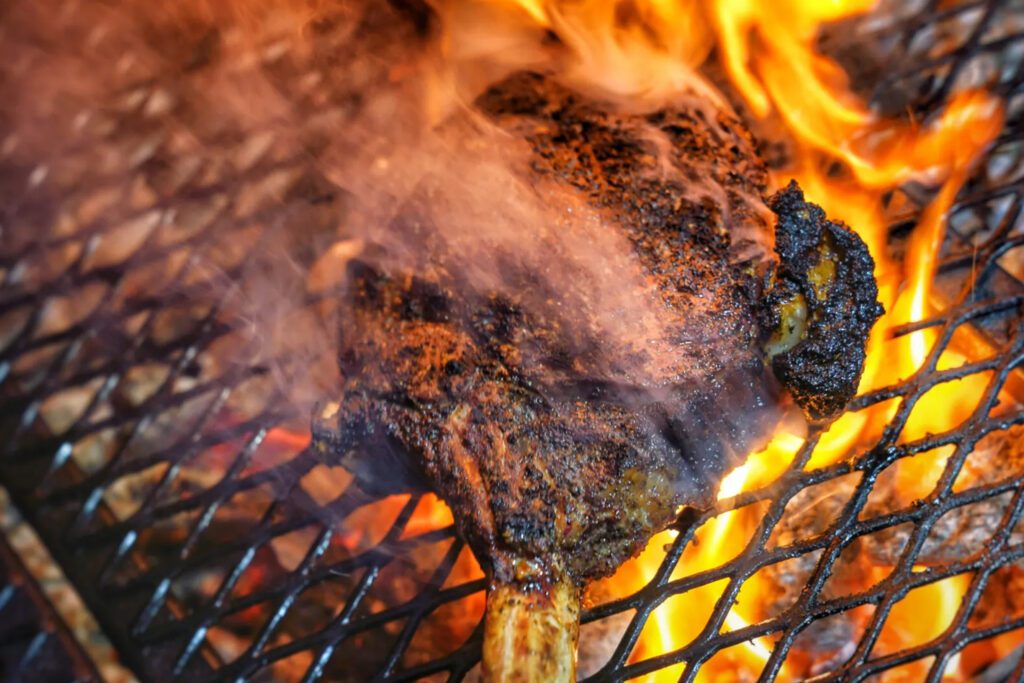Mastering smoking techniques can elevate your BBQ game, creating flavorful meats and vegetables cooked low and slow over wood fire. Choosing the right wood, preparing ingredients, controlling temperature, adding smoke flavor, timing, and resting are key steps. Different woods like hickory, mesquite, and oak impart unique flavors. Preparing meats and vegetables include trimming, marinating, and seasoning. Consistent temperature is crucial, typically ranging from 225-275 degrees Fahrenheit. Resting meats after smoking intensifies flavors. Experimenting with different techniques and ingredients can help create mouthwatering dishes that will impress friends and family, regardless of your BBQ experience level.
Smoking Techniques: Elevating Your BBQ Game with Smoked Meats and Vegetables
There’s nothing quite like the flavor of smoked meats and vegetables that have been cooked low and slow over a wood fire. Whether you’re a seasoned BBQ pro or just starting out, mastering the art of smoking can take your outdoor cooking game to the next level. With the right techniques and a little practice, you can create mouthwatering dishes that will have your friends and family coming back for more.
Choosing the Right Wood
One of the most important factors in smoking is the type of wood you use. Different woods impart different flavors to your food, so it’s important to choose wisely. Some popular choices include hickory, mesquite, oak, apple, and cherry. Each wood has its own unique flavor profile, so experiment with different options to find the one that best complements your dish.
Preparing Your Meats and Vegetables
Before you start smoking, it’s important to properly prepare your meats and vegetables. This includes trimming off excess fat, marinating or seasoning, and allowing the flavors to meld before cooking. For meats, consider using a dry rub or wet marinade to enhance the flavor. For vegetables, a simple seasoning of salt, pepper, and olive oil can go a long way.
Controlling the Temperature
Consistent temperature control is key when smoking meats and vegetables. The ideal smoking temperature typically ranges from 225-275 degrees Fahrenheit, depending on the dish you’re preparing. Use a thermometer to monitor the temperature of your smoker and make any necessary adjustments to maintain the desired heat level.
Adding Smoke Flavor
To achieve that signature smoky flavor, you’ll need to add wood chips or chunks to your smoker. Soak your wood chips in water for at least 30 minutes before adding them to the fire to ensure a slow, steady release of smoke. You can also experiment with different types of wood to achieve unique flavor profiles in your dishes.
Timing is Everything
Smoking meats and vegetables is a slow and steady process that requires patience. Depending on the type and size of the meat, smoking times can vary from a few hours to an entire day. It’s important to plan ahead and allow yourself enough time to cook your dish to perfection. Use a meat thermometer to ensure your meat is cooked to the proper internal temperature.
Resting and Serving
Once your meats and vegetables are finished smoking, it’s important to allow them to rest before serving. This allows the juices to redistribute and the flavors to intensify. Let your meat rest for at least 10-15 minutes before slicing and serving to ensure a juicy and tender end result. Pair your smoked dishes with your favorite sides and enjoy a delicious meal with friends and family.
With these tips and tricks in mind, you can elevate your BBQ game and impress your guests with mouthwatering smoked meats and vegetables. Experiment with different woods, seasonings, and cooking times to find your perfect smoking technique. Whether you’re a beginner or a seasoned pro, there’s always room to improve your outdoor cooking skills and create unforgettable dishes that will keep everyone coming back for more.
